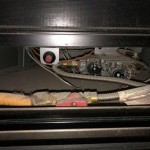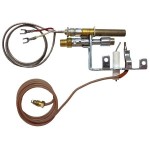How Much Is A Gas Fireplace Insert? Understanding the Costs
Gas fireplace inserts offer an efficient and aesthetically pleasing way to upgrade an existing wood-burning fireplace. They provide the convenience and warmth of a gas fire without the mess and inefficiency associated with traditional wood-burning methods. However, understanding the costs involved in purchasing and installing a gas fireplace insert is crucial for budgeting and making an informed decision. The total cost can fluctuate significantly based on various factors, including the unit's size, features, brand, installation complexities, and local labor rates.
The primary cost component is, of course, the gas fireplace insert itself. These units range in price depending on the heat output (measured in BTU – British Thermal Units), the venting system they require, the aesthetic features they offer, and the brand reputation. Entry-level models designed for smaller spaces and featuring basic functionality might start around $2,000. Higher-end models, equipped with advanced features like remote control, programmable thermostats, and realistic flame patterns, can easily exceed $5,000 or even $8,000. It is important to carefully assess personal heating needs and desired features before selecting a model to ensure the unit aligns with budget and expectations.
Venting plays a crucial role in the overall cost of a gas fireplace insert. There are two primary types of venting systems: direct vent and natural vent. Direct vent systems are typically more expensive to install because they draw combustion air from outside and exhaust directly outside, requiring a sealed system. This method improves efficiency and indoor air quality. Natural vent systems, which utilize the existing chimney, are often less expensive to install initially, but may have limitations in terms of efficiency and venting performance. The cost of venting materials and installation can range from $500 to $2,000 or more, depending on the complexity of the setup and the height of the chimney.
Installation is another significant cost factor that should not be overlooked. While some homeowners with experience in gas line connections and basic construction might consider self-installation, it is strongly recommended to hire a qualified professional. Improper installation can lead to dangerous gas leaks, carbon monoxide poisoning, or fire hazards. Professional installers have the necessary expertise, tools, and licenses to ensure the unit is installed safely and in compliance with local building codes. Installation costs typically include connecting the gas line, running venting, securing the insert within the fireplace opening, and testing the system for proper operation. These costs can range from $500 to $2,000 or more, depending on the complexity of the job. Factors influencing the cost include the accessibility of the gas line, the condition of the existing chimney, and any modifications needed to the fireplace opening.
Factors Influencing the Price of the Insert Itself
Several key factors directly influence the price of the gas fireplace insert. The BTU rating, which indicates the heat output, is a primary driver. Higher BTU ratings translate to greater heating capacity and, consequently, a higher price. The aesthetic design and features also play a significant role. Inserts with realistic log sets, vibrant flame patterns, and decorative firebox liners typically command a higher price than basic models. The brand reputation and warranty also influence the price. Established brands known for quality and reliability often charge a premium, but their products are likely to offer greater longevity and performance. The type of ignition system (electronic or millivolt) can also affect the price, with electronic ignition systems generally being more expensive.
Remote control functionality, programmable thermostats, and other advanced features add to the cost. These features offer convenience and allow for precise temperature control, but they are not essential for basic operation. Homeowners should prioritize features that align with their needs and budget. The physical dimensions of the insert are also a factor. Larger inserts designed for larger fireplace openings will typically be more expensive than smaller models. Furthermore, the material of construction influences the price; inserts made of durable, high-quality materials like cast iron or heavy-gauge steel will be more expensive but will also offer greater longevity.
Costs Associated with Venting Options
The venting system is a critical component of a gas fireplace insert installation and directly impacts the overall cost. Direct vent systems, which draw combustion air from outside and exhaust directly outside, are generally more expensive to install than natural vent systems. The cost of direct vent systems includes the venting pipe, termination cap, and labor for installation. Direct vent systems are often preferred because they offer improved efficiency, better indoor air quality, and greater flexibility in terms of installation location. The venting can be run horizontally through an exterior wall or vertically through the roof.
Natural vent systems utilize the existing chimney, which can reduce the initial installation cost. However, it is crucial to have the chimney inspected by a qualified professional to ensure it is in good condition and properly sized for the gas fireplace insert. The chimney must be clean, structurally sound, and free from obstructions. If repairs or modifications are needed, such as relining the chimney, the cost can quickly escalate. Natural vent systems are also subject to local building codes and regulations, which may require specific venting configurations. The size and height of the chimney also impact the venting performance of natural vent systems. A tall, adequately sized chimney will provide better draft and venting compared to a short or undersized chimney.
Understanding Installation Expenses
Professional installation is highly recommended to ensure the safe and efficient operation of a gas fireplace insert. Installation expenses typically include the cost of labor, materials, and any necessary permits. The cost of labor can vary depending on the location, the complexity of the installation, and the experience of the installer. More complex installations, such as those involving modifications to the fireplace opening or running gas lines over long distances, will typically incur higher labor costs. The cost of materials includes the gas line connections, venting materials, sealant, and any other necessary hardware.
Obtaining the necessary permits before starting the installation is essential. Local building codes and regulations often require permits for gas appliance installations to ensure compliance with safety standards. The cost of permits can vary depending on the location and the type of work being performed. Failing to obtain the necessary permits can result in fines and delays. It is important to factor in the cost of permits when budgeting for the installation. A qualified installer will typically handle the permit process on behalf of the homeowner. Furthermore, the installer should perform a thorough inspection of the existing fireplace and chimney (if applicable) to identify any potential issues that could impact the installation. Addressing these issues before installation can prevent costly problems down the road.

Majestic 25 Inch Ruby Direct Vent Gas Fireplace Insert

Pleasant Hearth Universal Circulating Zero Clearance 36 In Ventless Dual Fuel Fireplace Insert Phzc36c The Home Depot

Timberwolf Tdi3n Gas Burning Fireplace Insert

Belmont Small Gas Insert

How Much Does A Gas Fireplace Cost Fireplaces Direct Learning Center

Gas Fireplace Insert Cost Forbes Home

Gas Fireplace Cost Guide Unit Add Ons Installation More

How Much Does A Gas Fireplace Cost Fireplaces Direct Learning Center

Empire 29 Loft Small Vent Free Gas Fireplace 10 000 Btu Vflc10in32 Hvacdirect Com

35 Ruby Contemporary Intellifire Touch Direct Vent Fireplace Insert Blower And Remote Electronic Ignition Majestic








